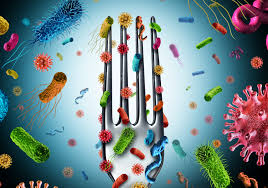Rapid Multiplex Biosensor For Foodborne Bacteria Detection

Current methods for detecting harmful bacteria in food are often slow, expensive, and rely on laboratory equipment and trained personnel, making them unsuitable for on-site or rapid testing. These limitations can lead to delays in identifying contaminated food, increasing the risk of foodborne illnesses and widespread outbreaks. Additionally, most existing tests can only detect one type of bacteria at a time, require large sample volumes, and lack the sensitivity needed to identify very low bacterial levels. There is a clear need for a faster, more affordable, and portable solution that can accurately detect multiple harmful bacteria at once using a small sample, without the need for specialised lab settings.
The solution is a portable Multiplex Biosensor that can rapidly detect three common foodborne bacteria—E. coli, S. aureus, and B. cereus—at the same time, using just a small sample volume of 9 microlitres. The device delivers accurate results within 15 minutes, significantly reducing the time and cost associated with traditional lab-based testing. Built with advanced materials and sensitive detection technology, it can identify very low levels of bacteria (as few as 10 cells per millilitre), making it a powerful tool for early detection. Its compact and easy-to-use design allows for on-site food safety testing without the need for laboratory equipment or trained personnel, offering a faster, cheaper, and more practical solution to improve food safety across the supply chain.
The innovation lies in the development of a portable Multiplex Biosensor that combines high sensitivity, rapid detection, and multi-pathogen capability in a single, easy-to-use device. Unlike conventional food safety tests that typically detect only one type of bacteria and require laboratory settings, this biosensor can simultaneously identify E. coli, S. aureus, and B. cereus from just 9 microlitres of sample. It uses advanced materials and smart sensor technology to detect as few as 10 bacterial cells per millilitre, providing lab-quality accuracy in a compact, field-ready format. This is the first of its kind to combine speed, portability, and multi-target detection into one system, offering a breakthrough solution for on-the-spot food safety testing.


